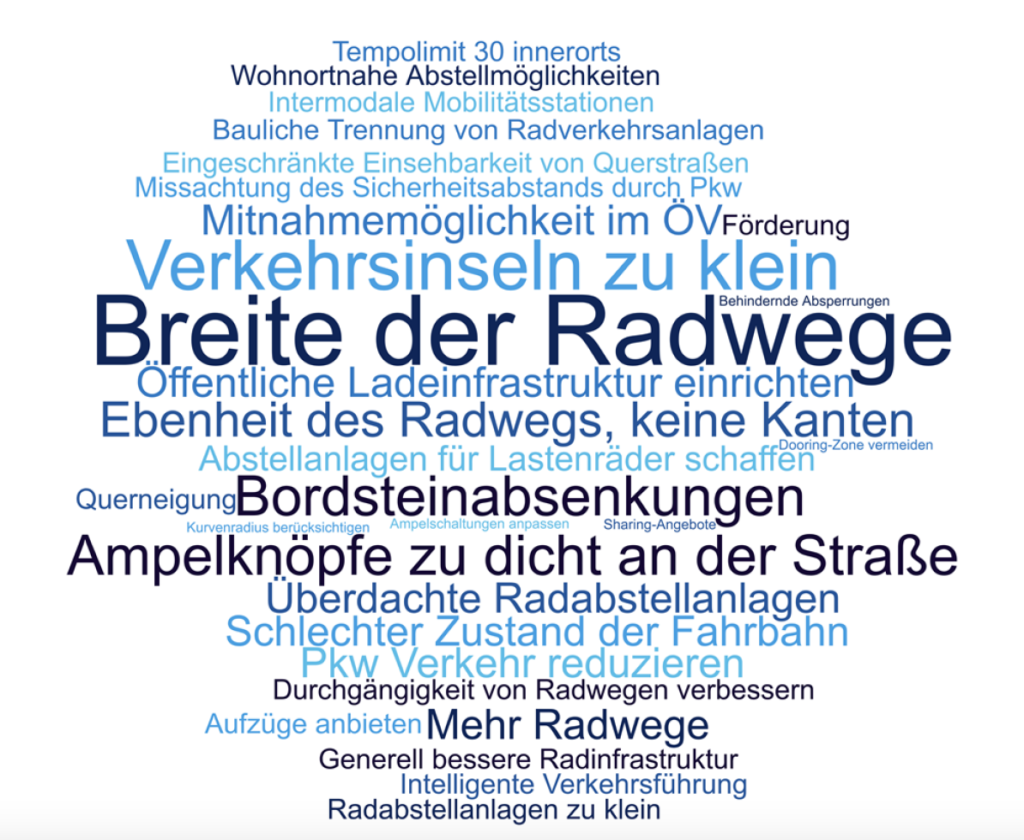In December 2021, the project-mo.de research project from the LOEWE focus „Infrastructure – Design – Society” was successfully completed with the work package „Requirements of cargo bikes on the infrastructure.“ The project involved three sub-projects: obtaining expert opinions on cargo bike dimensions and traffic planning, collecting experiences from cargo bike riders, and evaluating real data on cargo bikes to create a dimensioning vehicle for traffic planning.

The final report describes these data points in detail, and recommendations for action were derived from them. Overall, it was found that many measures are already being carried out and implemented in the cargo bike sector. Efforts are primarily aimed at making the use and procurement of the bikes low-threshold and, if possible, making them available to people of all income levels. In addition, high-profile measures are being used to make cycling a common practice. In cities and mid-sized towns, the use and deployment of cargo bikes are predominantly seen as favorable and advantageous, mainly because they can replace inner-city trips with zero emissions. However, limitations were also noted. The bike lane infrastructure was most criticized, with obstructions in the bike lane being the most frequently mentioned complaint in the interviews.
Experienced cargo bike riders confirmed the poor bike lane infrastructure described above. These riders reported that the bike lanes are too narrow and generally have poor surface conditions. Additionally, they said that the traffic islands are too small for cargo bikes and that structural requirements such as bollards, circulation barriers, and grated curbs are missing. The lack of public transport options and suitable parking facilities are additional major obstacles for trips with cargo bikes.
The description of the numerous obstacles makes it evident that the bicycle infrastructure must consider sufficient sizing and scale in the future. One approach could be using a dimensional vehicle for cargo bikes in transportation planning. Collecting data and conducting an internet search of over 100 cargo bike dimensions, a dimensional vehicle was created as part of the project.
The research resulted in a realistically proportioned cargo bike that is 2.60 meters long, has a wheelbase of exactly 2 meters, is 1.20 meters high, and has a 70-centimeter wide transport box and 89-centimeter wide handlebars. Such a dimensioning vehicle is to be applied, for example, in streetscape design. The future addition of minimum turning curves or curve radii to the concept should still be worked out. The final report can be found on the ReLUT homepage.
